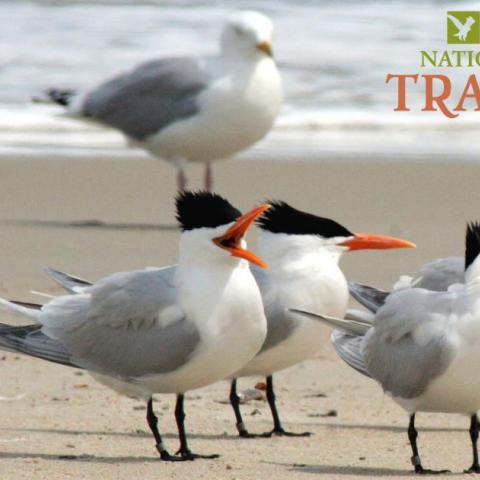National Parks Traveler Episode 113: Emergency Medicine In National Parks

Help power the National Parks Traveler’s coverage of national parks and protected areas.


My first visit to Cape Hatteras National Seashore on the Outer Banks of North Carolina came quite a few years ago, when I was in college and a friend and I drove down from New Jersey in his tiny and cramped Chevy Vega to do some fishing. It was a wonderful trip, and the seashore a great destination if you love surfcasting.

There is a place or two in the National Park System where you can reach up and pluck a fresh apple, or peach, or cherry, or even apricot. But only at Capitol Reef National Park in Utah can you do so against a backdrop of soaring redrock.

Just off the coast of Maine lies anchored the oldest national park east of the Mississippi, a park with an artistic flair and blue blood in its founding. Though Acadia National Park is small, coming in around 35,000 acres, it plays much bigger, as they might say in golf. You can explore more than 40 miles of bucolic carriage roads, hike to the top of Cadillac Mountain, search tide pools for marine life at low tide, or kayak the waters surrounding Mount Desert Island.

Great Smoky Mountains National Park is an ideal place to see bear, elk and other mammals, large and small. But too often the place these wild animals are seen most is dead along the side of Interstate 40 in the Pigeon River Gorge, victims of a fragmented habitat combined with an increasing number of motor vehicles.

In this week’s show, Contributing editor Kim O’Connell joins me to discuss some of the stories from across the country that we’re working on at the Traveler and will be rolling out on the Traveler in the weeks and months ahead. And Lynn Riddick has a short story about a unique fundraiser that’s giving Wind Cave National Park new tools to manage and learn about the genetically pure bison herd there.

Coral is a foundation species – one that creates the habitats that support biodiversity and provides essential shoreline protection. The waters of Dry Tortugas National Park, which lies about 60 miles to the west of Key West, Florida, are home to some 30 species of coral. One type –- Elkhorn Coral -- rises above the rest, literally and figuratively, for its importance in the region. It also happens to be the most threatened.

This week we continue our conversation with Yellowstone National Park Superintendent Cam Sholly on the state of his park. We discuss efforts to greatly reduce the number of invasive lake trout in Yellowstone Lake, Yellowstone’s infrastructure needs, and some of the conservation projects park staff are working on.


What’s the state of national park philanthropy? The outbreak of the coronavirus pandemic a year ago impacted nonprofit organizations that work to support national parks. Many organizations that rely on retail sales for revenues had to close their outlets and layoff staff. How are things today?
National Park Foundation President Will Shafroth and Friends of Acadia President David MacDonald discuss Covid’s impact on nonprofits that support parks.


National Parks Traveler is a 501(c) (3) nonprofit.


Here’s the definitive guide to National Park System campgrounds where RVers can park their rigs.
Our app is packed with RVing- specific details on more than 250 campgrounds in more than 70 national parks.
You’ll also find stories about RVing in the parks, tips helpful if you’ve just recently become an RVer, and useful planning suggestions.
